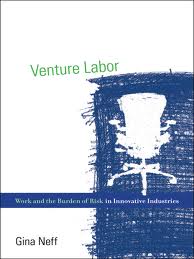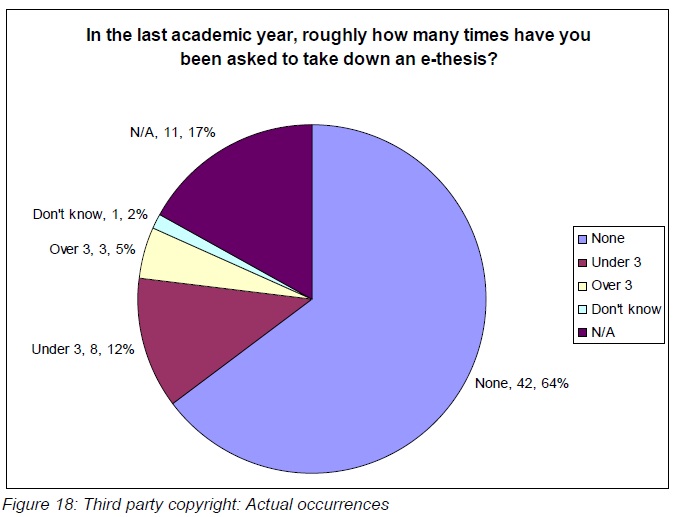
http://www.flickr.com/photos/jopeattie/4012370776/
This post is the second in a series by Josie Dixon, a consultant with 15 years’ experience in academic publishing, as Senior Commissioning Editor at Cambridge University Press and Publishing Director for the Academic Division at Palgrave Macmillan. She now runs her own business, Lucian Consulting, and gives training workshops on publishing and other forms of research communication for postgraduates, postdocs and staff in over 50 universities internationally, alongside her training and consultancy work in the publishing industry. In this set of blog posts for PhD2Published, Josie examines some of the polarities between Planet PhD and the world of publishing, and offers strategies for how to bridge the gap.
It’s well known that PhD stands for ‘piled high and deep’. What’s sometimes harder to admit is that depth is usually achieved at the expense of breadth. Burrowing down that scholarly rabbit hole inevitably limits the audience for a PhD, so when you’re thinking about publication, it’s vital to come up for air and look around at the larger field in which your burrow is located. Managing the relationship between the ‘micro’ dimension (where the project is most specifically defined) and the ‘macro’ (where its broader applications may lie) will be key to maximising your chances of getting published. Commissioning editors’ instinctive reaction to most thesis topics is that they’re too narrow to find a viable market in book form. So unless you’re happy to publish in specialist journals, developing the macro dimension will be essential to making the transition from PhD to publication.
It’s worth recognising that the distance between the two has grown over the last couple of decades. Universities have been under pressure to improve PhD completion rates, and one major instrument in a successful crackdown on this problem has been tighter control over the choice of thesis topics. Today’s PhDs are better focused, but narrower than the more ambitious projects which waylaid academic career development in previous generations. Meanwhile, in the publishing world, monograph sales have been falling year on year, and publishers’ efforts to shore up the viability of this form of publishing have focused on filtering out over-specialised titles and concentrating on broader topics.
The narrower focus of today’s PhDs is often exemplified in case studies. Social scientists are generally taught to recognise, make explicit and theorise case-study research, to understand its value and also its limitations. It’s not always readily acknowledged that this applies to the humanities too. The study of a particular figure or theme or work (of art, literature, music, philosophy or theology) will be a limited exercise unless we explore its relationship with broader phenomena – the development of the genre, the culture of the period, wider intellectual movements or philosophical ideas. To that extent, our chosen works or examples become case studies for these broader phenomena which are otherwise too large and diffuse to give meaningful boundaries to a project. Without some version of the case-study principle, we’d all be embarking on that archetypally impossible search for the key to all mythologies.
When it comes to publishing, there’s a bigger imperative to develop and make explicit what your research yields beyond the terms of your case-study material. If you are studying a topic which has received little attention to date, the very factor which helps to secure the originality of your research will also limit its audience (and the market for a publication), unless you can show what difference it makes to the mainstream of your discipline. How will a new study of Charlotte Lennox change our view of eighteenth-century fiction or the development of women’s writing? What impact will a study of Guicciardini have on our understanding of early modern political thought? It’s easy to forget the need to elaborate on these larger implications when you have spent years burrowing down your own scholarly rabbit hole, but this factor will make a vital difference to the size of your audience and the level of interest you will be able to raise outside the circle of paid-up, card-carrying fellow-specialists in your sub-field.
The same is true when it comes to applications. A typical linguistics PhD, offering a grammar and morphology of an endangered language with a tiny number of native speakers, would have an impossibly small market if pitched only to fellow specialists in that language. But if the analytical framework developed can be applied to the study of other languages, then that macro dimension – in this case methodological – will open up a far wider potential readership with clear benefits for other scholars’ research.
Here are five key questions, to help you to take the macro perspective on your research:
i) Understand the limits of your PhD – first define your thesis topic at its most micro, according to all the relevant parameters such as region, time period, language, genre, approach, and the specific examples you have chosen to study in detail. Then you will be better able to work outwards towards the macro.
ii) What is the larger significance of your research? Think about ways to locate your chosen topic in a broader context. What is the contribution made by your research in relation to its own and related sub-fields, the larger discipline, methodological school, etc?
iii) How can you do justice to that breadth? Think about ways to widen your coverage and bring those connections to the fore.
iv) What do you see as its larger implications? These can often be explored more freely in a publication than a PhD.
v) What will be its applications, in the hands of your readers? Remember, the PhD was for you (and written for a couple of examiners), but publishers will want to know more about what value a publication offers to the reader, and what broader purposes your research will serve for them.








 (C) http://www.flickr.com/photos/james_scott/
(C) http://www.flickr.com/photos/james_scott/ 




 SPECIALIZE. GET KNOWN FOR SOMETHING
SPECIALIZE. GET KNOWN FOR SOMETHING (c) Moyan Brenn Berkut83@hotmail.it
(c) Moyan Brenn Berkut83@hotmail.it 
 Image from christmasstockimages.com
Image from christmasstockimages.com 


 http://www.flickr.com/photos/library_of_congress/2163470598/#/
http://www.flickr.com/photos/library_of_congress/2163470598/#/ 
 http://www.flickr.com/photos/jopeattie/4012370776/
http://www.flickr.com/photos/jopeattie/4012370776/ 






